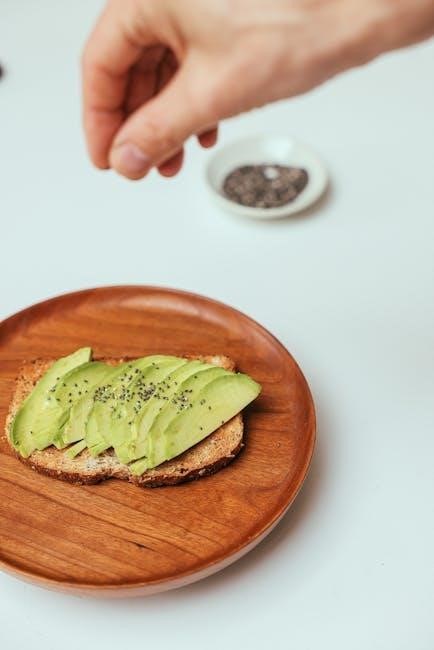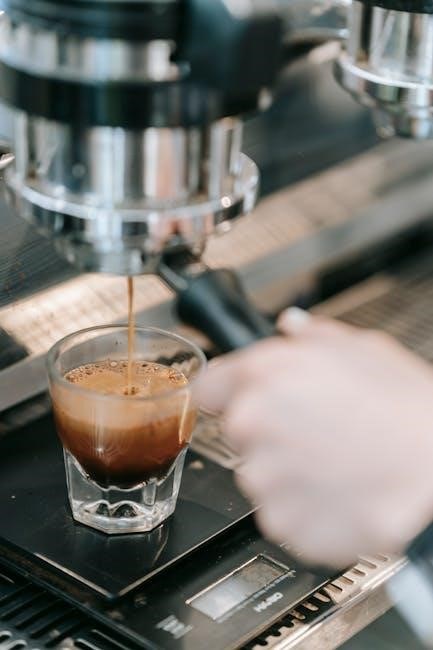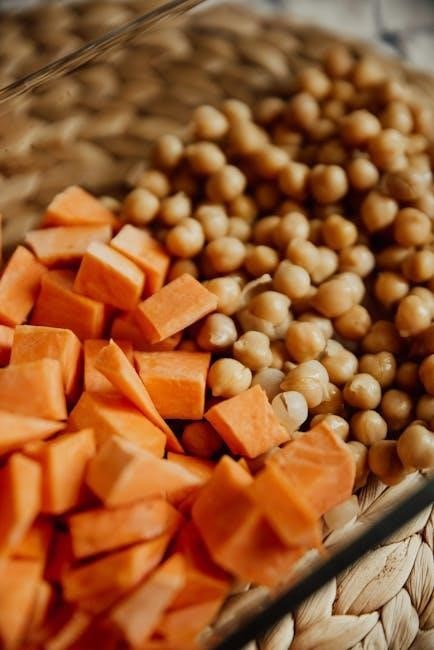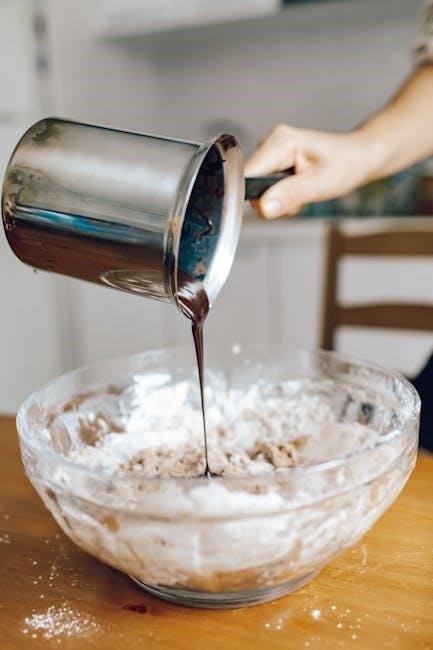Platelet-rich plasma (PRP) is a biologic concentrate derived from blood, rich in platelets and growth factors, used to enhance healing in medical and dental applications. Standardized protocols ensure consistent preparation and efficacy, addressing variability in clinical outcomes.
1.1. What is Platelet-Rich Plasma (PRP)?
Platelet-rich plasma (PRP) is a biologic concentrate derived from blood, containing a high concentration of platelets and associated growth factors. It is prepared through differential centrifugation, separating platelets from red and white blood cells. PRP harnesses the body’s natural healing potential, promoting tissue repair and regeneration in various medical and dental applications.
1.2. Importance of PRP in Medical and Dental Applications
Platelet-rich plasma (PRP) is highly valued in medical and dental fields for its ability to enhance tissue repair and regeneration. It is widely used in orthopedics, sports medicine, and dental surgeries to promote wound healing, reduce inflammation, and improve recovery times. PRP’s growth factors stimulate cellular regeneration, making it a cost-effective and minimally invasive treatment option for various clinical applications, including hair rejuvenation and skin treatments.

Basic Principles of PRP Preparation
PRP preparation involves blood collection, anticoagulation, and centrifugation to separate platelets from other blood components. The process concentrates platelets in plasma, enhancing their regenerative potential for therapeutic use.
2.1. Blood Collection and Anticoagulation Methods
Blood for PRP is typically collected via venipuncture into tubes containing anticoagulants like acid-citrate dextrose (ACD) or sodium citrate to prevent clotting. Proper mixing ensures platelet preservation, avoiding activation. The choice of anticoagulant and tube type is critical to maintain platelet viability and functionality, ensuring optimal PRP preparation for therapeutic applications.
2.2. Differential Centrifugation Process
Differential centrifugation separates blood components by applying varying centrifugal forces. An initial soft spin (100-300g) removes red blood cells, yielding platelet-rich plasma. A second, higher-speed spin (600-1,200g) concentrates platelets. This stepwise process ensures optimal platelet isolation while preserving growth factor functionality, crucial for therapeutic applications in tissue repair and regeneration.
Centrifugation Protocols for PRP Preparation
Standardized centrifugation protocols involve specific speeds and durations to isolate platelets. Typical protocols include 100-300g for 10-15 minutes, followed by 600-1200g for 10 minutes, ensuring optimal platelet concentration and growth factor preservation.
3.1. Single-Spin vs. Double-Spin Methods
The single-spin method involves one centrifugation step, while the double-spin method uses two, optimizing platelet concentration. Double-spin protocols, such as 100g followed by 600g, yield higher platelet counts with reduced white blood cell contamination, enhancing PRP quality and efficacy in clinical applications.
3.2. Recommended Centrifugation Speeds and Times
Recommended centrifugation speeds range from 100g to 600g, with durations varying between 10 to 20 minutes. Double-spin protocols, such as 100g for 15 minutes followed by 600g for 20 minutes, optimize platelet recovery and reduce white blood cell contamination, ensuring higher quality PRP for clinical applications.

Standardization of PRP Preparation
Standardization of PRP preparation involves optimizing centrifugation parameters, ensuring consistent platelet concentrations, and minimizing variability to enhance therapeutic reliability and clinical outcomes.
4.1. Challenges in PRP Standardization
Standardizing PRP preparation faces challenges due to variability in protocols, including differences in centrifugation speeds, times, and tube types. Additionally, the presence of white blood cells and varying platelet concentrations can affect consistency. These factors contribute to inconsistencies in clinical outcomes, highlighting the need for optimized, reproducible methods to ensure reliable results across studies and applications.
4.2. Optimized Protocols for Consistent Results
Optimized PRP protocols often involve double-spin centrifugation at specific speeds and durations, such as 100g for 15 minutes followed by 1600g for 20 minutes. These methods minimize variability and ensure consistent platelet concentrations. Standardized anticoagulant use and controlled processing environments further enhance reproducibility, reducing white blood cell contamination and improving therapeutic outcomes in clinical applications.
Characterization of PRP
PRP is characterized by high platelet concentrations and growth factor content. Quality control measures include platelet count, growth factor analysis, and purity checks to ensure therapeutic efficacy.
5.1. Platelet Count and Growth Factor Analysis
Platelet count and growth factor analysis are critical for assessing PRP quality. Standardized protocols measure platelet concentration and growth factor levels to ensure therapeutic efficacy. Accurate quantification of platelets and bioactive molecules like PDGF, TGF-β, and VEGF is essential for consistent clinical outcomes. Variability in centrifugation speeds and times significantly impacts platelet yield and growth factor concentration, necessitating precise protocols for optimal results.
5.2. Quality Control Measures
Quality control measures ensure PRP preparation consistency and safety. Sterility testing, endotoxin checks, and platelet viability assessments are essential. Standardized protocols minimize contamination risks and verify growth factor concentrations. Accurate documentation of centrifugation parameters and sample handling further enhances reliability. These measures guarantee the efficacy and safety of PRP for clinical applications, maintaining high standards in therapeutic outcomes.

Applications of PRP in Clinical Practice
PRP is widely used in orthopedics, sports medicine, dermatology, and dental surgery to promote tissue repair and healing. Its growth factors enhance wound recovery and tissue regeneration effectively.
6.1. PRP in Orthopedics and Sports Medicine
PRP is increasingly used in orthopedics and sports medicine to treat injuries like tendonitis, ligament sprains, and osteoarthritis. Its growth factors stimulate cellular repair, reducing inflammation and promoting tissue healing. Clinical studies show PRP injections improve joint function and pain relief in conditions like knee osteoarthritis, making it a promising treatment for athletes and patients with musculoskeletal disorders.
6.2. PRP in Dermatology and Hair Rejuvenation
PRP is widely used in dermatology for skin rejuvenation and hair restoration. It stimulates collagen production, improving skin texture and reducing wrinkles. In hair rejuvenation, PRP promotes follicle activity, treating conditions like androgenetic alopecia. Clinical studies show significant improvements in hair density and thickness, making it a popular, minimally invasive treatment for aesthetic and dermatological applications.
6.3. PRP in Dental and Maxillofacial Surgery
PRP is extensively used in dental and maxillofacial surgery to enhance tissue repair and regeneration. It promotes bone graft integration, accelerates wound healing, and supports periodontal regeneration. PRP’s growth factors stimulate cellular proliferation, making it ideal for procedures like implant placement and sinus lifts, reducing healing time and improving surgical outcomes in oral and maxillofacial reconstruction.
Comparative Analysis of PRP Preparation Protocols
Protocols vary in centrifugation speeds, times, and spin cycles, impacting platelet yield and consistency. Comparative studies evaluate these variables to determine optimal methods for clinical applications.
7.1. Single-Spin vs. Double-Spin Methods
The single-spin method involves one centrifugation step, while the double-spin method includes two, with varying speeds and times. Single-spin is simpler but may yield lower platelet concentrations. Double-spin methods, such as centrifuging at 100g followed by 1600g, often produce higher platelet purity and consistency, making them preferred for clinical applications requiring precise platelet enrichment.
7.2. Effect of Centrifugation Speed on Platelet Yield
Centrifugation speed significantly impacts platelet yield in PRP preparation. Lower speeds (100-300g) are used for soft spins to separate red blood cells, while higher speeds (1600-3200g) concentrate platelets. Optimal speeds balance platelet recovery and purity, as excessive force can damage platelets. Double-spin methods at varying speeds enhance yield consistency, making them preferable for clinical applications requiring high platelet concentrations.

Optimization Strategies for PRP Preparation
Optimizing PRP involves adjusting centrifugation parameters and incorporating additives to enhance platelet concentration and bioactivity, ensuring consistent and effective preparations for clinical use.
8.1. Adjusting Centrifugation Parameters
Optimizing centrifugation parameters, such as speed and duration, is critical for achieving high platelet concentrations. Studies suggest that speeds between 100xg to 1600xg and durations of 5-20 minutes can significantly influence platelet yield and purity. Adjusting these parameters helps tailor PRP preparations for specific clinical applications, ensuring maximal bioactivity and therapeutic efficacy.
8.2. Use of Additives for Enhanced PRP Properties
Additives like anticoagulants (e.g., ACD) and calcium chloride are used to enhance PRP properties. These additives help maintain platelet viability, prevent clotting, and promote growth factor release. Biochemical supplements can further optimize PRP’s therapeutic potential, improving its stability and bioactivity. However, their use must be carefully balanced to avoid adverse effects or contamination, ensuring safe and effective clinical applications.
Safety and Regulatory Considerations
PRP therapy is generally safe but requires adherence to strict protocols to minimize complications. Regulatory frameworks vary globally, necessitating standardized guidelines for preparation and application to ensure patient safety.
9.1. Potential Risks and Complications
Common risks of PRP therapy include infection, allergic reactions, and localized inflammation. Inconsistent platelet concentrations due to non-standardized protocols may lead to variable clinical outcomes. Proper sterilization and adherence to preparation guidelines are essential to minimize complications and ensure patient safety.
9.2. Regulatory Framework for PRP Therapy
PRP therapy is classified as a biologic therapy, subject to regulatory oversight. In many regions, PRP preparation is considered a minimally manipulated autologous product, often exempt from FDA approval. However, adherence to strict preparation protocols and quality standards is mandated to ensure safety and efficacy. Regulatory guidelines emphasize proper documentation and compliance with good manufacturing practices for medical use.
PRP preparation protocols continue to evolve, with standardized methods improving clinical outcomes. Future research should focus on optimizing centrifugation techniques and exploring adjunct therapies to enhance efficacy.
10.1. Summary of Key Findings
Standardized PRP preparation protocols, including double-spin centrifugation, optimize platelet concentration and growth factor availability. These methods enhance clinical efficacy in tissue repair and regenerative therapies. Consistent protocols ensure reproducibility, addressing variability in outcomes. Future research should focus on refining centrifugation parameters and exploring adjunct therapies to further improve PRP’s therapeutic potential in diverse medical applications.
10.2. Emerging Trends in PRP Research
Emerging trends in PRP research focus on optimizing preparation protocols, exploring bioactive additives, and advancing point-of-care devices. Studies emphasize combining PRP with other therapies, such as stem cells or hyaluronic acid, to enhance efficacy. Additionally, investigations into standardized protocols and regulatory collaborations aim to establish PRP as a reliable, evidence-based treatment across medical disciplines.

Leave a Reply